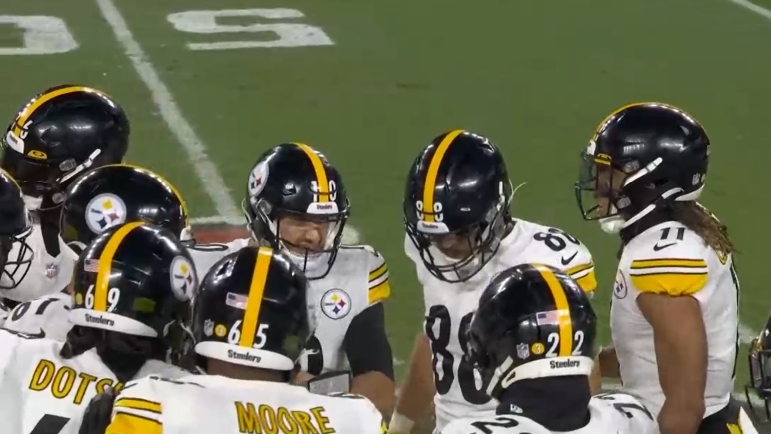One of the paramount issues for the Pittsburgh Steelers as a team thus far this year has been their complete failure to play complementary football, in all phases. The most obvious manifestation has been the accumulated imbalance in time of possession due to the offense’s inability to sustain drives and the defense’s inability to end them.
We talked about Cameron Heyward’s frustration over the situation last night. Wide receiver Chase Claypool expressed similar sentiment, although he took a more general approach.
Heyward focused only on the defense’s inability to get off the field when he was asked about how difficult it was to be on the field so much. Claypool was asked about how frustrating it was for the offense being unable to sustain drives. “Yeah, it is frustrating when the defense is on the field for a long time and we go three and out”, he said.
The Steelers entered last night’s game averaging 2:17 minutes per offensive drive, which ranked 28th in the league. This is largely a byproduct of numerous three-and-out drives, of which they had three—in a row—last night.
On the flip side, the defense hasn’t held up its own, either. They were allowing opposing offenses to sustain drives at an average of 3.13 minutes per drive, which ranked 26th in the league entering last night’s game.
My quick math tells me that the Steelers’ offense remained on the field for roughly 2:12 minutes per drive last night, possessing the ball for about 24 total minutes of game time across 11 possessions. Conversely, the defense was on the field for about 36 minutes across 10 drives, which translates to about 3:36 seconds per drive. In other words, it was more of the same, if not worse.
Because of the amount of talent that the Steelers do have on both sides of the ball, we have these short periods of glimpsing what each unit is supposed to look like. The offense, for example, had back-to-back touchdown drives of 75 yards in the second quarter last night. The defense started out well with two strong drives as well—before giving up consecutive touchdown drives to follow.
That was the best example of complementary football of the season thus far, though. After each touchdown the Browns allowed, the offense responded with a matching touchdown in the second quarter.
That was nice, while it lasted. But the offense couldn’t sustain it, and the defense wouldn’t get much better. The Browns picked up at least 57 yards on five consecutive drives from six minutes left in the first quarter through six minutes gone in the fourth.








